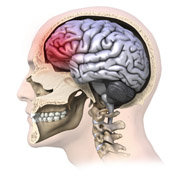Research and Innovation, UNL Office of

Center for Brain, Biology, and Behavior: Faculty Publications
Document Type
Article
Date of this Version
2021
Citation
EBioMedicine 73 (2021) 103638
https://doi.org/10.1016/j.ebiom.2021.103638
Abstract
Background: Alzheimer’s disease (AD) is generally thought to spare primary sensory function; however, such interpretations have drawn from a literature that has rarely taken into account the variable cognitive declines seen in patients with AD. As these cognitive domains are now known to modulate cortical somato-sensory processing, it remains possible that abnormalities in somatosensory function in patients with AD have been suppressed by neuropsychological variability in previous research. Methods: In this study, we combine magnetoencephalographic (MEG) brain imaging during a paired-pulse somatosensory gating task with an extensive battery of neuropsychological tests to investigate the influence of cognitive variability on estimated differences in somatosensory function between biomarker-confirmed patients on the AD spectrum and cognitively-normal older adults. Findings: We show that patients on the AD spectrum exhibit largely non-significant differences in somato-sensory function when cognitive variability is not considered (p-value range: .020-.842). However, once attention and processing speed abilities are considered, robust differences in gamma-frequency somatosensory response amplitude (p < .001) and gating (p = .004) emerge, accompanied by significant statistical suppression effects. Interpretation: These findings suggest that patients with AD exhibit insults to functional somatosensory processing in primary sensory cortices, but these effects are masked by variability in cognitive decline across individuals.
Included in
Behavior and Behavior Mechanisms Commons, Nervous System Commons, Other Analytical, Diagnostic and Therapeutic Techniques and Equipment Commons, Other Neuroscience and Neurobiology Commons, Other Psychiatry and Psychology Commons, Rehabilitation and Therapy Commons, Sports Sciences Commons


Comments
his is an open access article under the CC BY license